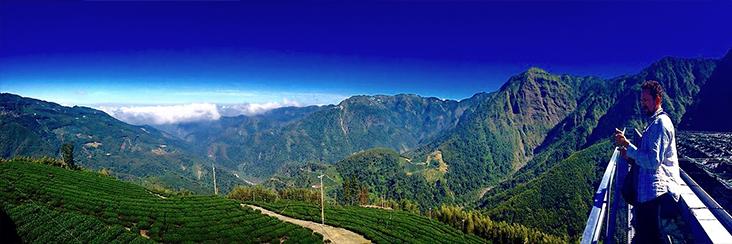
Summer Harvest Of High Mountain Tea: The Sustainable Choice

We are happy to announce the arrival of this year's summer harvest of Shan Lin Xi High Mountain Oolong. Only since last year have we begun to offer the summer harvest from this source of high mountain tea, and we did so for a few specific reasons. First of all, it's considerably cheaper than spring and winter harvests, and while there is a noticeable difference in quality and character, it's still a fine high mountain tea. And for the price, it's a great deal!
It is generally acknowledged that a difference in quality between spring and summer/fall crops of tea is more noticeable at lower elevations. The higher the elevation, the less difference in quality. Starting as low as 1300m, there can be minimal seasonal differences, depending on the source. We have also discovered that it depends on the skill and patience of the tea maker to produce a quality tea from a summer or fall harvest. It requires more oxidization of the tea leaves to counteract the tendency to be astringent due to hotter weather in these growing seasons. And since we have begun sourcing from one of the most sought after producers on the local scene, we've been convinced that summer and fall crops are definitely worth representing.

The significant price difference between the primary spring/winter teas and secondary summer/fall harvests is a result of marketing trends in Taiwan over the last few decades, which has influenced supply and demand, in addition to the seasonal differences in character and quality of the tea produced. The local industry has promoted spring tea as the most popular for both product quality and cultural reasons, and winter tea is in even higher demand due to its traditionally distinct character, it's relatively minimal seasonal yield (especially at higher elevations), and the proximity between this harvest and Chinese New Year — the biggest gift-giving time of the year.

We have found summer and fall harvests to be quite nice teas, and from a sustainability perspective, the preferred choice. There is less demand in the local industry, and the economic value of these crops is actually underrated in comparison to spring and winter seasons. Beyond this, it's yet another opportunity to gain deeper knowledge of the local specialty tea industry. Experiencing the subtle yet noticeable seasonal differences produced from the same farm allow us to appreciate this unique tea culture in a more substantial way.

So let us know what you think of this crop of summer tea, particularly if you were fortunate enough to get some of our spring crop that has just sold out! It really is a fun and meaningful experience to follow and compare the different characters of each seasonal batch. And before you know it, we'll have some fall tea to share with you some time in September.

